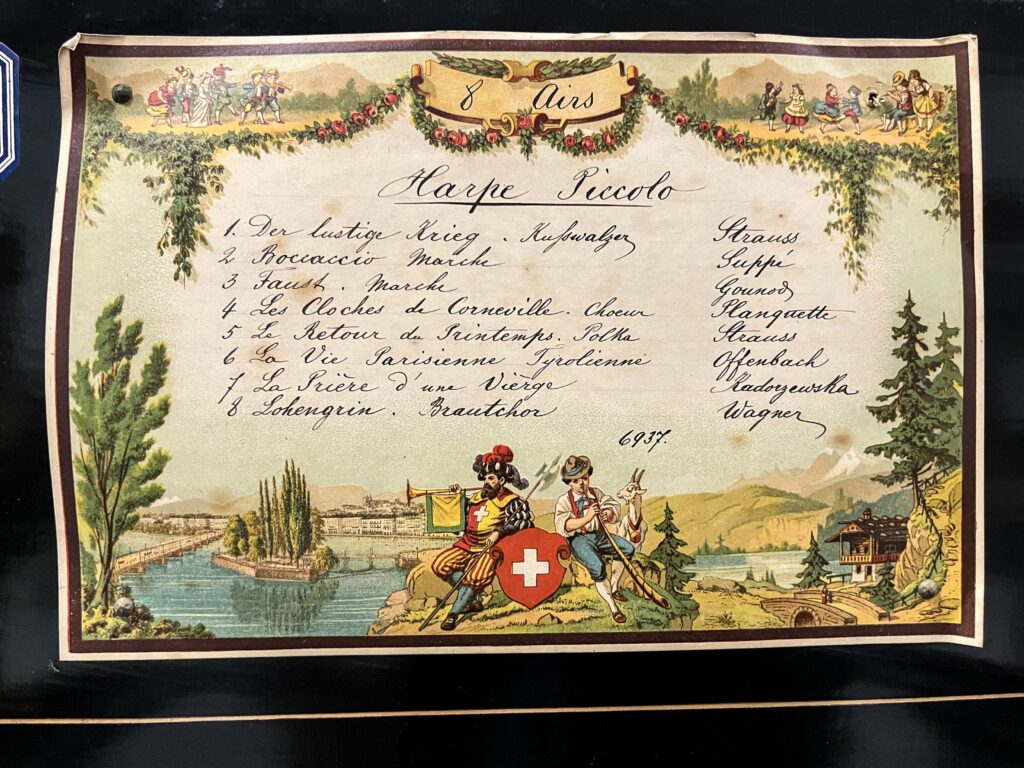This music box has a metal cylinder with small bumps, which catch on the metal comb to create sounds. The positioning of the bumps will determine the notes played and the song the box produces. The mechanism is activated by a lever, which connects to a spring in order to rotate the cylinder and sound the music.
Not only audibly but visually entertaining too, you can watch the mechanism working as it plays its song, cylinder turning and decorative butterflies hitting the bells that are housed inside.
The plaque on the lid was affixed soon after the box arrived at Dorset Museum & Art Gallery, in memory of the previous owner, Lina Chappell. From looking at correspondence between the donor and museum, it is likely that the plaque was made by Dorset sculptor Mary Spencer Watson.


